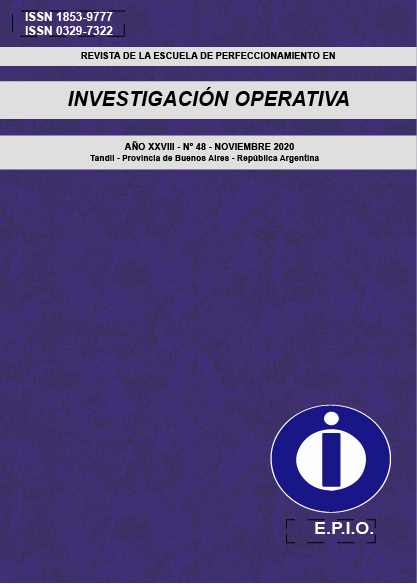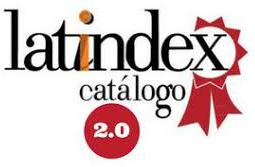Evaluación de una plataforma de carpooling mediante experimentos de selección
Keywords:
carpooling, urban transportation, choice experiment, discrete choice modelAbstract
The city of Buenos Aires, as other large metropolis, struggles with traffic congestion in its main access routes and highways, the saturation of different transport modes, and the resulting environmental deterioration. The increasing trend in the number of motor vehicles, in addition to the steady tendency of people to live farther away from the urban centers have aggravated this problem. Carpooling of individuals making similar routes can contribute to solve this problem, by complementing transit with the flexibility and comfort of a private motor vehicle.
In this article we analyze the interest among Buenos Aires city habitants for a carpooling system based on a social network, materialized through an online platform that allows car drivers and riders that share similar routes to meet and to get to an agreement about the economic aspects of the trip. Neither professional drivers nor a commercial enterprise is required for the system to operate. As an incentive for drivers to subscribe to the carpooling system, a high occupancy vehicle lane in the main access highways of the city is proposed. The empirical validation has been carried out by means of a discrete choice experiment in which the carpooling alternative competes with existing transport modes. Variation in travel time and cost for each alternative are proposed through different scenarios which are distributed via an on-line instrument to a representative sample of people living in multiple suburban neighborhoods in the metropolitan area of Buenos Aires. Discrete choice models are used to analyze the data gathered in the experiment to calculate the supply and demand curves and evaluate the economic and operating viability of the system.
Downloads
References
Abrahamse W., Keall M. (2012). Effectiveness of a web-based intervention to encourage carpooling to work: a case study of wellington, New Zealand. Transport Policy, 21, 45-51.
Asociación de Fábricas Argentina de Componentes. http://www.afac.org.ar/
Almeida Correia G., Abreu E Silva J., Viegas J.M. (2013): Using latent attitudinal variables estimated through a structural equations model for understanding carpooling propensity. Transportation Planning and Technology 36 (6).
Baldassare M., Ryan S., Katz C. (1998). Suburban attitudes toward policies aimed at reducing solo driving. Transportation, 25, 99-117.
Ben-Akiva M., Lerman S. (1985). Discrete choice analysis: theory and application to travel demand. MIT Press.
Borriello A., Scagnolari S., Maggi R. (2015). Are commuters in Lugano ready to leave the car? evaluating conventional and innovative solutions to facilitate the switch. Conference Paper STRC 2015 (Swiss Transport Research Conference).
Chan N.D., Shaheen A.S. (2012). Ridesharing in North America: past, present, and future. Transport Reviews,32 (1), 93-112.
Correia G., Viegas J.M. (2011). Carpooling and carpool clubs: clarifying concepts and assessing value enhancement possibilities through a stated preference web survey in Lisbon, Portugal. Transportation Research Part A, 45, 81-90.
Delhomme P., Gheorghiu A. (2016). Comparing French carpoolers and non-carpoolers: whoch factors contribute the most to carpooling? Transportation Research Part D, 42, 1-15.
Dorinson D., Gay D., Minett P., Shaheen S. (2009). Flexible carpooling: exploratory study. University of California Davis.
Dunlap R. E., Van Liere K. D., Mertig A. G., Jones R. E. (2000). New trends in measuring environmental attitudes: measuring endorsement of the new ecological paradigm: a revised nep scale. Journal of Social Issues, 56 (3), 425-442.
Flannelly K.J., Mc Leod M.S. (1989). A multivariate analysis of socioeconomic and attitudinal factors predicting commuters’ mode of travel. Bulletin of the Psychonomic Society, 27(1), 64-66.
Gärling T., Schuitema G. (2007). Travel demand management targeting reduced private car use: effectiveness, public acceptability, and political feasibility. Journal of Social Issues, 63(1), 139-153.
Gobierno de la Ciudad de Buenos Aires. Plan de mobilidad sustentable. https://fr.slideshare.net/dianamondino/transporte-buenos-aires-2020-plan-de-movilidad-20-g-krantzer.
Gheorghiu A., Delhomme P. (2018). For which types of trips do French drivers carpool? motivations underlying carpooling for different types of trips. Transportation Research Part A,113, 460-475.
Giuliano G., Levine D.W., Teal R.F. (1990). Impact of high occupancy vehicle lanes on carpooling behavior. Transportation 17(2), 159-177.
Instituto Nacional de Estadística y Censos: Censo 2010: https://www.indec.gob.ar/indec/web/Nivel4-Tema-2-41-135.
Koppelman F.S., Bhat C.R., Schofer J.L. (1993). Market research evaluation of actions to reduce suburban traffic congestion: commuter travel behavior and response to demand reduction actions. Transportation Research Part A, 27(5), 383-393.
Levofsky A., Greenberg A. (2001). Organized dynamic ride sharing: the potential environmental benefits and the opportunity for advancing the concept”. Transportation Research Board Annual Meeting 2001.
Margolin J.B., Lisch M.R., Stahr M. (1978). Incentives and disincentives of ride sharing. Program of Policy Studies in Science and Technology, George Washington University.
Massaro D.W., Chaney B., Bigler S., Lancaster J., Iver S., Gawade M., Eccleston M., Gurrola E., Lopez A. (2014). Carpool now: just in time carpooling without elaborate preplanning. Procedia Computer Science, 37, 396-403.
Mc Fadden D. (1997). Measuring willingness-to-pay for transportation improvements. University of California.
Mc Fadden D., Train K.E. (2000). Mixed MNL models for discrete response”. Journal of Applied Econometrics, 81, 447-770.
Meyer E. (2014). The culture map: breaking through the invisible boundaries of global business. Public Affairs.
Minett P., Pearce J. (2011). Estimating the energy consumption impact of casual carpooling. Energies 4 (1), 126-139.
Morrales Sarriera J., Escovar G., Blynn K., Alesburry A., Scully T., Zhao J. (2017). To share or not to share. investigating the social aspects of dynamic ridesharing. Transportation Research Record, 109-117.
Neoh J.G., Chipulu M., Marshall A. (2015). What encourages people to carpool? an evaluation of factors with meta-analysis. Transportation 44 (2), 423-447.
Otero I., Nieuwenhuijsen M.J., Rojas-Rueda D. (2018). Health impacts of bike sharing systems in Europe”. Environment international, 115, 387-394.
SAIMO (2015): El nivel socioeconómico en ARGENTINA. Sociedad Argentina de Investigadores de Mercado y Opinion. http://www.saimo.org.ar/observatorios/observatorio-social.
Shaheen S.A., Chan N.D., Gaynor T. (2016). Casual carpooling in the San Francisco bay area: understanding user characteristics, behaviors, and motivations. Transport Policy, 51, 165-173.
Steg L., Vlek C., Slotegraaf G. (2001). Instrumental-reasoned and symbolic-affective motives for using a motor car. Transportation Research Part F, 4 (3),151-169.
Teal R.F. (1987). Carpooling: who, how and why. Transportation Research Part A, 3, 203-214.
Thurstone L. L. (1927). A law of comparative judgement. Psychological Review, 34, 273-286.
Train K. (2009). Discrete choice methods with simulation. Cambridge University Press.
Triandis H. C., Gelfand M. J. (1998). Converging measurement of horizontal and vertical individualism and collectivism. Journal of personality and social psychology,74,1-118.
Wachs, M. (1990). Transportation demand management: policy implications of recent behavioral research. Journal of Planning Literature.
Wang R. (2011): Shaping carpool policies under rapid motorization: the case of Chinese cities. Transport Policy, 18, 631-635.
Zhang D., Li Y., Zhang F., Lu M., Liu Y., He T. (2013). Coride carpool service with awin-win fare model for large-scale taxicab networks. SenSys '13 Proceedings of the 11th ACM Conference on Embedded Networked Sensor Systems N° 9.
Downloads
Published
How to Cite
Issue
Section
License
Copyright (c) 2020 Emilio Picasso, Mariano Bonoli Escobar, Pedro Cosatto Ammann

This work is licensed under a Creative Commons Attribution-NonCommercial-ShareAlike 4.0 International License.
Atribución — Usted debe dar crédito de manera adecuada, brindar un enlace a la licencia, e indicar si se han realizado cambios. Puede hacerlo en cualquier forma razonable, pero no de forma tal que sugiera que usted o su uso tienen el apoyo de la licenciante.
NoComercial — Usted no puede hacer uso del material con propósitos comerciales.
CompartirIgual — Si remezcla, transforma o crea a partir del material, debe distribuir su contribución bajo la misma licencia del original.







